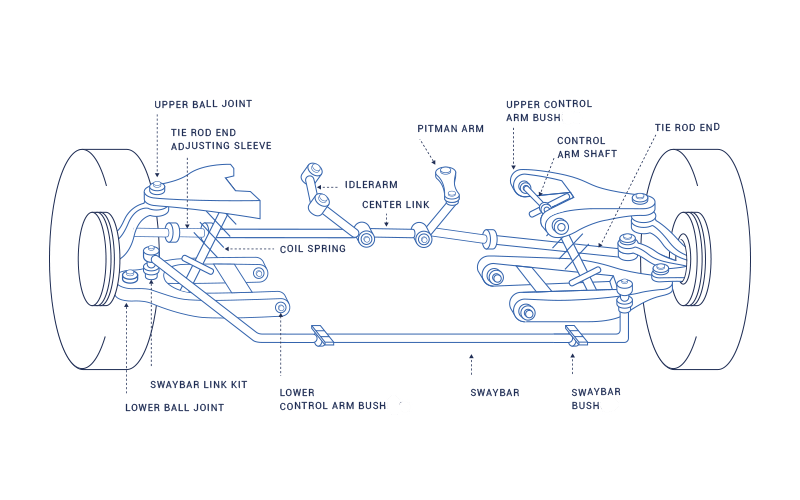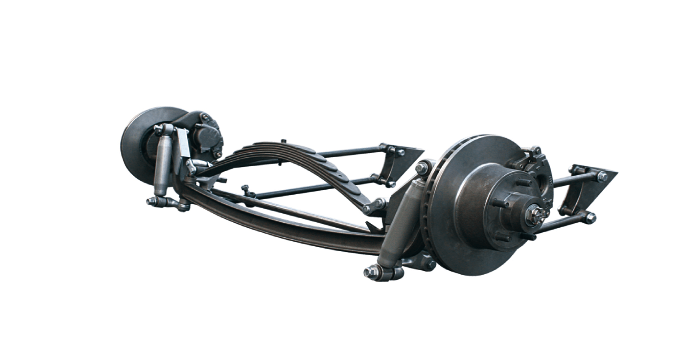Find Your Car Parts Instantly
- Best Price Guarantee Buy with confidence because you aren't getting a better price than this.
- Free Shipping Enjoy the luxury of free shipping on orders above $299.
- A Grade Quality Used Car Parts
Avail the best OEM Auto parts & components that are just as new - Our Friendly Parts Specialist will get you what you need !
Front End Assembly
The ‘front end assembly’ is the vital framework that connects the steering and suspension to the front of the chassis. Worn components or loose front-end assembly parts can cause a host of dangerous problems. Safe driving, responsive steering and fast stopping are all put in jeopardy if problems creep in and suspension and steering parts loosen or corrode. Find out how to identify problem areas with a thorough front end assembly check on your car.
Deck lids only refer to the upper part of the trunk. The part of the deck lid that holds the latch, is referred to as the deck lid panel. The panel generally holds the vehicle's emblem and is displayed as a different design from the rest of the trunk body.
Some deck lid panels include the use of glossier paints or emblem deletes. The price range on an aftermarket deck lid panel ranges depending on the type of vehicle.
(571) 541-9171

What is the front end assembly?
The group of parts that we call the front end assembly include both the steering system and the suspension system of the vehicle. The structure should be tight, solid and secure, with metal and soft components in good condition.
Steering system:
There are two basic types of steering systems in cars: the popular rack-and-pinion steering system and the steering box system. Either of these can be power-assisted by a hydraulic pump or, more recently, electronic power steering (EPS), which helps the driver to manoeuvre in tight spaces.
Suspension system:
this connects the wheels to the chassis and uses springs, shock absorbers, link bars and control arms to cushion impact and allow relative motion.
How to inspect the front-end assembly for wear and damage

Here are the steps to a complete front end assembly inspection:
- Before you start, do a bounce test. While the car is parked, push up and down until you get the body bouncing. Then let go. It should stop bouncing and stabilise within two bounces. If it continues, then the shocks or struts are likely to need replacing. You can look at these later.
- Make sure the car is on a flat, even surface with the handbrake on.
- Secure it with wheel chocks around the rear tyres.
- Jack up the front of the car using a manual or hydraulic jack.
- Look at the tyres – as uneven tyre wear can give valuable clues to any problems with the front end assembly. See tyre wear patterns and causes.
- Check the tyres for looseness by grabbing the left and right sides and trying to shake the wheels. Then grab the wheel by the top and bottom and again, try to shake it. The wheel should be nice and solid, so if you find movement or noise, it tends to indicate worn tie rods or ball joints.
- Remove the tyre if there’s looseness, for a closer look at the parts.
- Look at the upper and lower ball joints to see if there’s any deterioration. Try moving these spherical ball joints with a pry bar to see if they wobble. If they move in and out, there is some corrosion and they need replacing. The boot (cover) may also be split, which means it can let water in.
- Look at the end links on the sway bar (also called the anti-roll bar, that connects opposite wheels). See if they wiggle about. If there’s anything more than minimal movement in these links, then they need replacing.
- Check the tie-rod assembly by grabbing hold and shaking to see if it moves. There may be some play on either the inner or outer tie-rod end, and you should also check for cracks or rips on the boots (rubber covers).
- Look at the rack-and-pinion (the central system that contains the steering rack). If there’s any sign of leakage, this will be power steering fluid (which is orange or amber in colour and has a burnt smell). It may be dripping down from the power steering fluid reservoir onto the rack-and-pinion. If the rack-and-pinion itself is actually leaking (at the rack end seals/boots), then it often means the whole unit needs replacing. Don’t forget to look at all the bushes (sometimes called bushes). These critical little components are usually made of rubber and sit between metal parts to reduce friction. You’ll find bushes on the control arm, rack-and-pinion and other suspension parts. They tend to wear with age, heat and stress, becoming loose and cracking. They can be fiddly to replace, so speak to a mechanic if you can see a perished bush.
- Finally, take a look at the struts, shocks and coil springs. If you noticed excessive bounciness in the test at the start, then look closely at these shock-absorbing parts. The shock or strut rises vertically above each wheel. You may see or feel dampness from leaking oil, or perhaps dents or cracks. If this is the case, they should ideally be replaced in pairs. If left, they’ll impair handling and make the car unsafe in emergency stops.